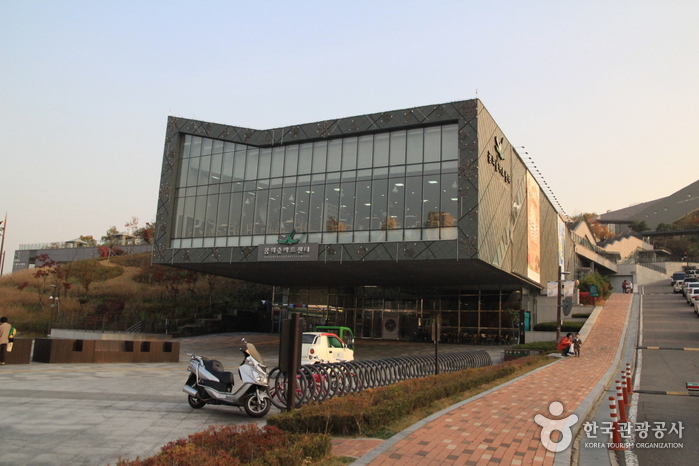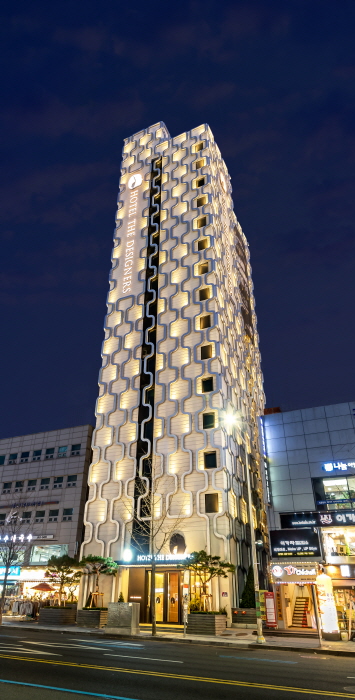Seoul Cruise (서울크루즈)
7.5Km 2025-12-04
231 Yeouidohanganggongwon-gil, Yeongdeungpo-gu, Seoul
Hyundai Cruise Line, Korea's first marine tourism cruise operator, was founded in 1983 and renamed Seoul Cruise after building a new terminal in Yeouido. With Yeouido Ferry Terminal as its base, Seoul Cruise is the only passenger cruise operator that can travel from the Hangang River to the West Sea, passing through the Ara West Sea Lock. The company currently operates from two terminals: Yeouido Ferry Terminal and Ara Gimpo Terminal. In addition to offering tours that showcase the scenic beauty of the Hangang River, Seoul Cruise also provides other options, such as the Dinner Fireworks Cruise, which lets passengers enjoy a fireworks show along the Ara Waterway in Gimpo.
Soseoul Hannam (소설한남)
7.5Km 2024-02-22
B-B1, 21-18 Hannam-daero 20-gil, Yongsan-gu, Seoul
Soseoul Hannam is a Korean fine-dining located in Hannam-dong. It offers modern interpretations of traditional Korean cuisine. The menu consists of lunch and dinner courses. Popular dishes include sliced raw fish served with fischer’s ragwort and aged kimchi, as well as charcoal-grilled spicy stir-fried webfoot octopus and chicken dishes. It's also known for its diverse selection of traditional liquors for pairing. In 2023, it was selected for the Michelin Guide Seoul.
Kwangjuyo - Hannam Branch [Tax Refund Shop] (광주요 한남)
7.5Km 2024-06-27
28, Hannam-daero 20-gil, Yongsan-gu, Seoul
-
Dream Forest Art Center (꿈의숲 아트센터)
7.5Km 2025-01-15
173, Wolgye-ro, Gangbuk-gu, Seoul
Dream
Forest Art Center, located in Gangbuk, Seoul, is operated by the Sejong Center
for the Performing Arts. Composed of two performance venues (Performance
Hall and Concert Hall), alongside with Sang Sang Tok Tok Art Gallery and Dream
Gallery, there are also a Chinese restaurant, cafe and an observatory deck available
for all visitors to enjoy.
CheongKwanJang - Hannam Branch [Tax Refund Shop] (정관장 한남)
7.5Km 2024-04-17
#118, 60, Hannam-daero, Yongsan-gu, Seoul
-
Hotel The Designers - Cheongnyangni Branch (호텔 더 디자이너스 청량리)
7.5Km 2023-05-02
226, Wangsan-ro, Dongdaemun-gu, Seoul
+82-2-957-3300
Hotel The Designers, Cheongnyangni Branch is located four minutes from Cheongnyangni Station Exits 1 and 4 and two minutes by foot from Lotte Department Store. Visitors can take the KTX at Cheongnyangni Station to Gangneung and Yangpyeong or the ITX-Chungchun to Gapyeong, Nami Island in Chuncheon, and Yangpyeong Sheep Farm. Dongdaemun Market is only seven minutes away on Seoul Subway Line 1 and Incheon International Airport can be reached in one hour by car. The front desk is open 24 hours and free Wi-Fi is available throughout the accommodation. Parking is free and there are also valet services provided. Smoking is prohibited indoors. Each room is equipped with LED cable TV, refrigerators, free water, and an electric kettle. The bathrooms have bathtubs, shower facilities, and a bidet.
Uniqlo - Lotte Cheongnyangni Branch [Tax Refund Shop] (유니클로 롯데청량리)
7.5Km 2024-04-18
B1, 214, Wangsan-ro, Dongdaemun-gu, Seoul
-
Golden Dew - Lotte Cheongnyangni Branch [Tax Refund Shop] (골든듀 롯데청량리)
7.5Km 2024-04-19
1F, 214, Wangsan-ro, Dongdaemun-gu, Seoul
-
Lotte Department Store - Store Cheongnyangni Branch [Tax Refund Shop] (롯데백화점 청량리점)
7.5Km 2024-04-23
1F, 214, Wangsan-ro, Dongdaemun-gu, Seoul
-

![Kwangjuyo - Hannam Branch [Tax Refund Shop] (광주요 한남)](http://tong.visitkorea.or.kr/cms/resource/71/3314171_image2_1.jpg)

![CheongKwanJang - Hannam Branch [Tax Refund Shop] (정관장 한남)](http://tong.visitkorea.or.kr/cms/resource/34/2888134_image2_1.jpg)

![Uniqlo - Lotte Cheongnyangni Branch [Tax Refund Shop] (유니클로 롯데청량리)](http://tong.visitkorea.or.kr/cms/resource/58/2888858_image2_1.jpg)
![Golden Dew - Lotte Cheongnyangni Branch [Tax Refund Shop] (골든듀 롯데청량리)](http://tong.visitkorea.or.kr/cms/resource/51/2889551_image2_1.jpg)
![Lotte Department Store - Store Cheongnyangni Branch [Tax Refund Shop] (롯데백화점 청량리점)](http://tong.visitkorea.or.kr/cms/resource/07/2889907_image2_1.jpg)
 English
English
 한국어
한국어 日本語
日本語 中文(简体)
中文(简体) Deutsch
Deutsch Français
Français Español
Español Русский
Русский